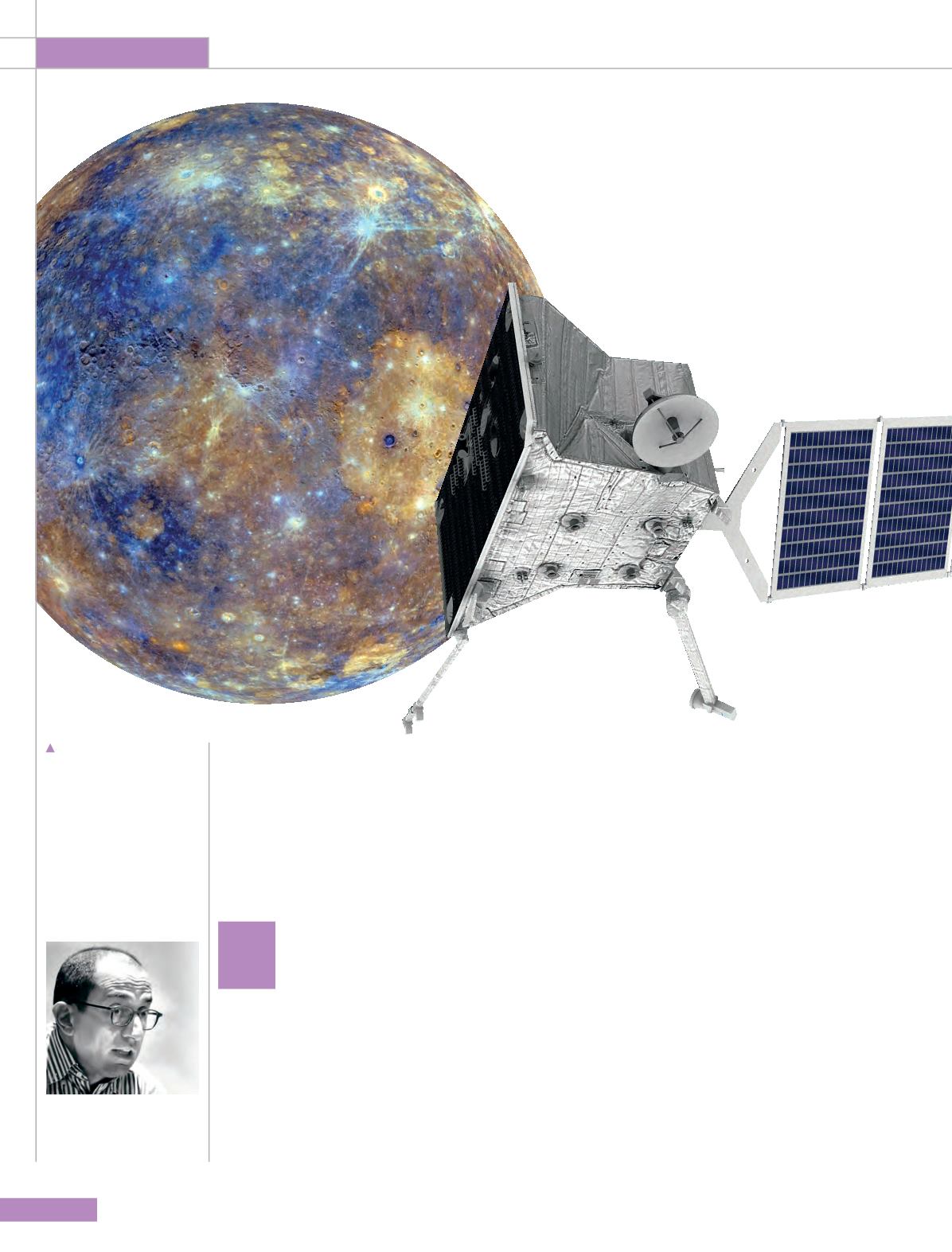
ROOM
84
Space Science
Andrea Ferrero
Thales Alenia Space,
Turin, Italy
M
ercury, the smallest and innermost
planet of the Solar System, lives the
paradox of being one of the closest
planets to Earth and yet one of the least
known - out of the eight planets of the Solar
System, only the faraway Uranus and Neptune
have been less explored.
This is not due to lack of interest, as the ‘iron
planet’ has some unique and intriguing features: it is
the second-densest planet in the Solar System after
Earth, and the only other inner planet besides Earth
to have a significant magnetic field. This is a key
parameter in allowing life to take hold on a planet,
as without its shielding Earth would receive a
significant amount of dangerous radiation from the
Sun thus making conditions difficult for biological
life to develop and persist.
Nonetheless, despite its modest gravity, Mercury
also has an atmosphere, albeit very tenuous, which
is constantly replenished in a way yet to be clarified,
and its craters may hold more ice than the Moon.
Not surprisingly, there is a lot of scope for
scientific exploration. However, many technical
challenges exist in trying to get a spacecraft in orbit
around Mercury. This is due to the gravitational pull
of the Sun which tends to accelerate any spacecraft
An enhanced colour
image of Mercury by
MESSENGER.
Bepi-Colombo
will unveil
Mercury’s
secrets
With scorching temperatures of up to 400 degrees Celsius by day and a frigid
-170 degrees by night, Mercury is no place for the ill-prepared! Nonetheless,
this has not stopped a joint European and Japanese consortium from
designing one of the most robust spacecraft ever made in order to brave
these extreme conditions and get a close-up look at the ‘iron planet’. Known
as BepiColombo, the mission is set for launch next year and aims to spend
four Mercury years unlocking the secrets of this unique planet.
NASA/JPL, ESA


